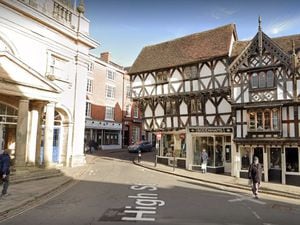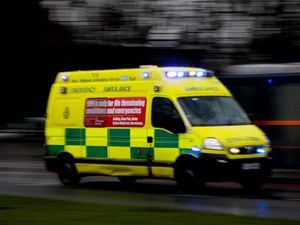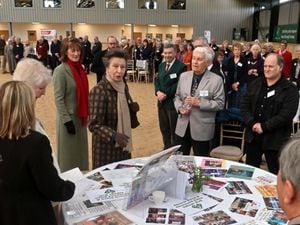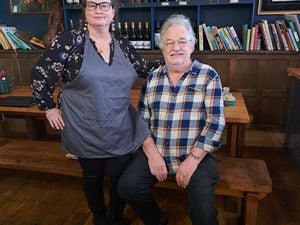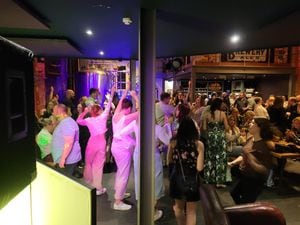Beer mats tribute to Ludlow's Great War heroes
Six local heroes of the First World War have been commemorated on a series of beer mats to mark the centenary.
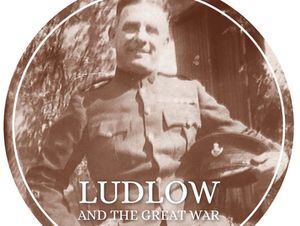
The beer mats have been created and funded by Gary and Alison Walters of Ludlow Brewery, featuring the photographs and stories of five men from the town who gave their lives in the war, and one who survived.
Those who died were William Baron, whose brother John was the first from the town to be killed in the conflict, William Griffiths, Alfred Saunders, Samuel Price and Walter Brown.
The survivor was Herbert Bufton, Ludlow’s most decorated soldier, who received the Distinguished Conduct Medal and Bar and the Military Medal.
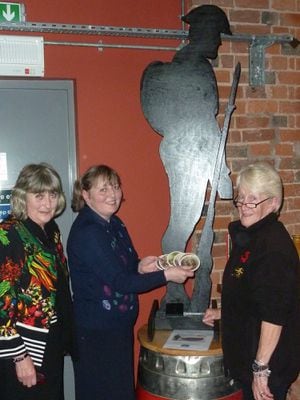
The beer mats are just one of a string of tributes organised by the Ludlow Memorial Fund in honour of the 147 men from Ludlow who died in the war, including the creation of the same number of 'shadow soldiers', appearing all over the town. One has been installed at Whitcliffe, where a memorial seat was also recently unveiled.
They are being made by town councillor Graeme Perks and painted by Robert Bradley whose great uncle, another of Ludlow’s war dead, is currently featured in an exhibition in the parish church. They are available to buy for £25.
Local historian Derek Beattie, speaking at the launch evening at Ludlow Brewery, said, “Everything that has been done, from having the names of the soldiers who died installed at the town centre memorial, to the planting of trees brought over from the battlefields, to these beer mats, has been done for the men who served and those who died.
“It has been a remarkable effort by sisters Margaret Edwards and Jean Parker and their helpers. They all deserve our respect and thanks.”
Ludlow Historical Research Group has set up a website listing all the soldiers who served, along with hundreds of pieces of information and photos. The group is keen to find out more an can be contacted on ludlowsoldiersww1.co.uk
A window dressing competition is also planned involving 25 local shops, while others are to be asked to put photos in their windows to mark the centenary.
The parish church exhibition will continue until November 12, the day after this year’s Remembrance Sunday service and parade.
Margaret Edwards said: "We would like to thank the community for the fantastic support it has given us."
William Griffiths
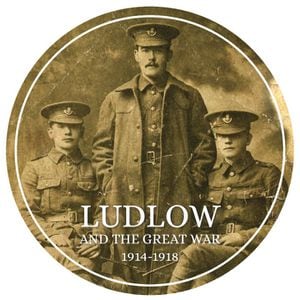
Born 1891 in Ludlow, William was the eldest of five children of bricklayer Edwin and Sarah Ann (nee Groves). His siblings were Edith Annie, twins Charles Francis and George, and Gertrude May, as well as Arthur who was adopted.
In 1911 the family was living at 12 Portcullis Lane and William, educated at the National School, Lower Galdeford, was working as a plumber’s mate. By 1914 the family had moved to 1 Lower Mill Street.
As a members of the Territorial Army, William, Charles and George went with their battalion to South Wales on coastal defence duties before sailing for the Far East in October 1914. The battalion served in Rangoon (Myanmar) and Singapore before sailing home in 1917 via Ceylon (Sri Lanka) and South Africa, landing in France in July.
William was listed as missing on 30 December 1917 during an action on Welch Ridge and confirmed dead in November 1918. He was most likely that he was killed while carrying out a counter attack.
He has no known grave, but is remembered on the Thiepval Memorial, France.
Samuel Price
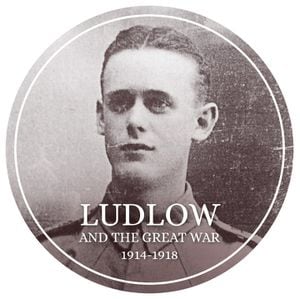
Born in Ludlow 1896, he was one of 14 surviving children of labourer William and Sarah (nee Knottt) of 43 Holdgate Fee.
In 1911 Samuel was an errand boy for a grocer.
As a member of the Territorial Army, Samuel was mobilised in August 1914 and after spending a short time on coastal defence duty in South Wales sailed for the Far East in October 1914.
Having seen service in Rangoon (Myanmar), India and Singapore his battalion sailed back to Europe in 1917 via Sri Lanka (Ceylon) and South Africa, landing in France in July.
Samuel was killed in action, aged 21, on 30 December 1917 in the action of Welch Ridge. A surprise German attack took some trenches that then had to be taken back by a successful counter attack.
He is buried in Metz-en-Couture Communal Cemetery British Extension, France.
His elder brothers William and Henry also served.
Alfred Saunders
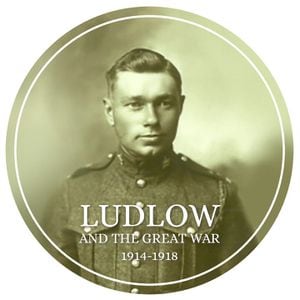
Born 1889 in Stottesden, Alfred was one of nine surviving children and eldest son of Alfred and Elizabeth of Rock Cottage Dairy, Rock Lane. His siblings were: Elizabeth Kate, Emily Henrietta, Geoffrey William, Philip Henry, Eva, George, Nora and Lucy.
Alfred worked for his father in the dairy business before emigrating to Canada.
He enlisted in the Canadian Army in Toronto on 8 November 1915.
Alfred set sail for the UK from Halifax, Nova Scotia, on 18 June 1916, later landing in France on 11 August 1916.
He was taken ill with suspected asthma in December 1916 and spent a week in hospital at Arques in January 1917.
He died, aged 27, of wounds suffered on Vimy Ridge at 8.50am on 2 March 1917. He is buried in Bruay Communal Cemetery Extension, France.
William Young Baron
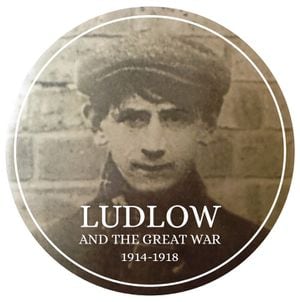
Born in Burnley, Lancashire in 1884, he was the eldest of five children of William and Jane Baron (nee Hughes). His siblings were Martha, Margaret, Thomas Hughes and John Henry. The family moved to Ludlow in around 1894.
In 1903 he enlisted as a regular soldier in the Royal Welsh Fusiliers. When he left in 1906 he was put on the reserve list.
He married Sarah Elizabeth Charmer of Ludlow in 1909 and they had five daughters, four of whom survived childhood.
In 1911 the family was living in St Mary’s Lane, Ludlow and William was a general labourer at the brickworks.
When the First World War began, William, now living at 57a, Corve Street returned to the colours and landed in France on 13 August 1914.
He died of shrapnel wounds to his head and back at 7.30am on 13 December 1915 and is buried in Bethune Town Cemetery.
Both of William's younger brothers also served. In October 1914 John was the first soldier from Ludlow to be killed in the conflict, while Thomas survived the war and died in 1932.
Walter Willam Brown
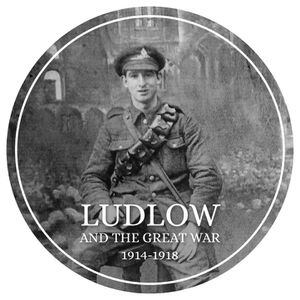
Born in Ludlow, Walter was the illegitimate child of Mary Ann Brown. Mary then married Thomas Price, a farm labourer, and had four more children.
By 1911 the family was living at 1 Lower Mill Street, Walter's stepfather having recently died. He immediately left school to work.
In 1914, aged 16, he tried to enlist but his mother told the recruiting officer his true age and he was refused. However his mother’s brother, who was a regular soldier, took Walter, without his mother’s knowledge, to Liverpool by train and he enlisted there under his mother’s maiden name of Brown.
Walter, aged 19, was killed on 4 June 1917 whilst helping to carry out the preliminary bombardment prior to the Battle of Messines Ridge in the Ypres Salient. The German artillery returned fire and a shell hit his gun killing the entire crew of five, including Walter.
He is buried in Vlamertinghe Military Cemetery, Belgium.
His uncle, Arthur Brown, was listed missing believed killed shortly after on 15 July 1917.
Herbert Edward Bufton
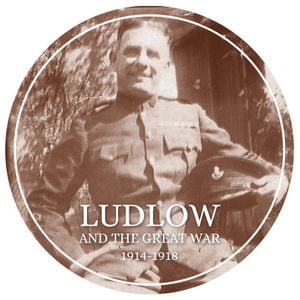
Born in Ludlow in 1886, Herbert was one of nine children of labourer Arthur and wife Alice. The family lived at Taylors Court, Lower Broad Street, in 1911. Herbert attended the British School in Old Street.
He married Eliza Elizabeth Blakeway in 1908 and had four children by 1914: Arthur Ivor, Reginald Bryan, Herbert C E and Gladys M.
Herbert was a bricklayer and the family lived at 3 Temeside, Ludlow. He enlisted in 1915, aged 28, landing in France on 4 August. His brother William also served in the conflict.
Herbert survived the war and became Ludlow's most decorated serviceman.
He won the Military Medal during the Battle of Delville Wood, part of the Battle of the Somme, in August 1916. Herbert brought up reserves to the front under heavy fire.
As a Sergeant, he was awarded the Distinguished Conduct Medal. After an advanced line of outposts had been established it was found necessary to relieve them, and under heavy fire he reconnoitred the line without guides and returned to safely bring up the relief.
As a Company Sergeant Major, Herbert received he Bar to the Distinguished Conduct Medal. He was in charge of some 200 non commissioned officers and men who prevented an imminent and potentially serious attack with a delivery of heavy fire.

